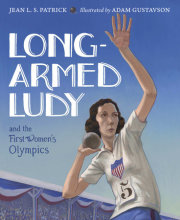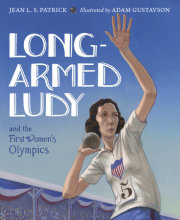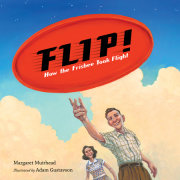No one really knows how Ludy’s arms got so long. Maybe too much tug-o’-warring with the dogs . . . Maybe too much hauling water to the hogs . . . Or maybe too much swingin’ from the tree branches with all six of her sisters and brothers hangin’ on.
Come to think of it, maybe that’s what made Ludy’s arms so
strong. Ludy: “Look out below!” When Ludy set off for Winthrop College in 1917, she was six feet tall and skinnier than a Carolina pine. In fact, if she turned sideways, you’d think she had disappeared.
But you could always spot Ludy on the athletic field.
Sprinting.
Scoring.
Cheering.
Supporting.
In every sport, Ludy used her long arms to encourage her teammates.
Ludy: “You can do it!”
During her final year on the track team, Ludy decided to try the shot put.
“Give it a ride,” urged Coach Bartlett.
Ludy scooped up the heavy, iron ball and placed it between her fingers. She bent her knees,
pushed her long arm upward, and released! The ball soared across the sky.
“Thunderin’ cannonballs!” whispered Ludy.
Her heart boomed. Her long arm tingled. She loved the explosion of power.
So Ludy trained to become a shot-putter. Every muscle needed to be strong.
She lifted dumbbells ’til her arms turned to noodles. She ran ’til her toes cried for mercy. And she did so many leg squats that her feet disappeared in the dust.
She wanted to become a champion.
Copyright © 2017 by Jean L. S. Patrick (Author); Adam Gustavson (Illustrator). All rights reserved. No part of this excerpt may be reproduced or reprinted without permission in writing from the publisher.










